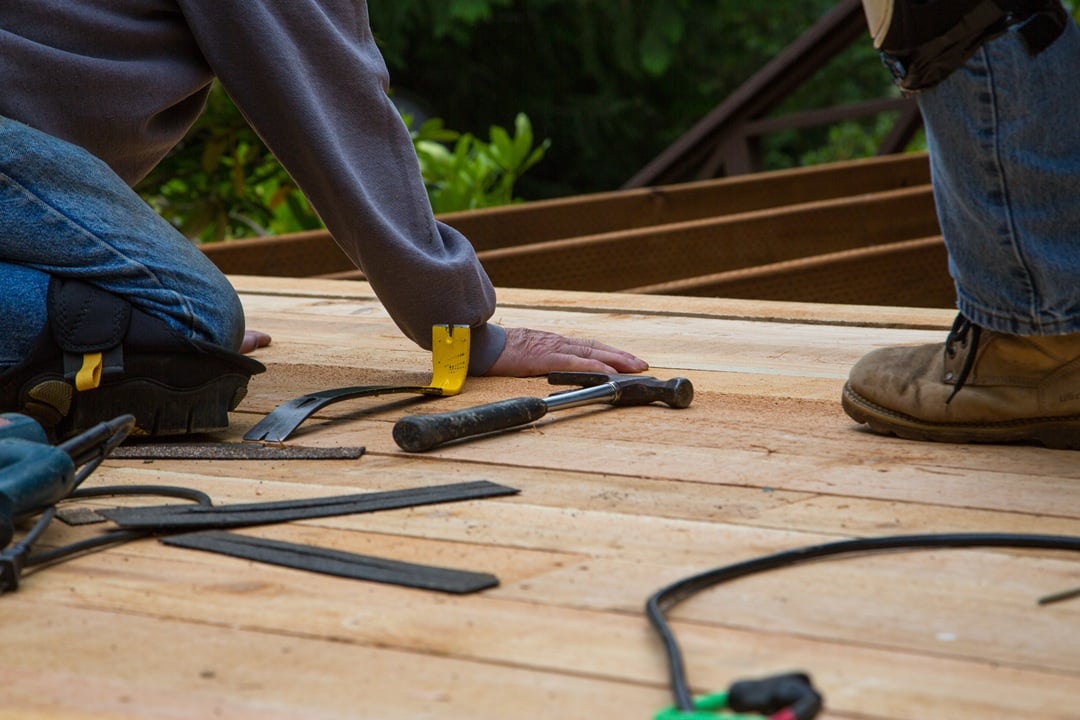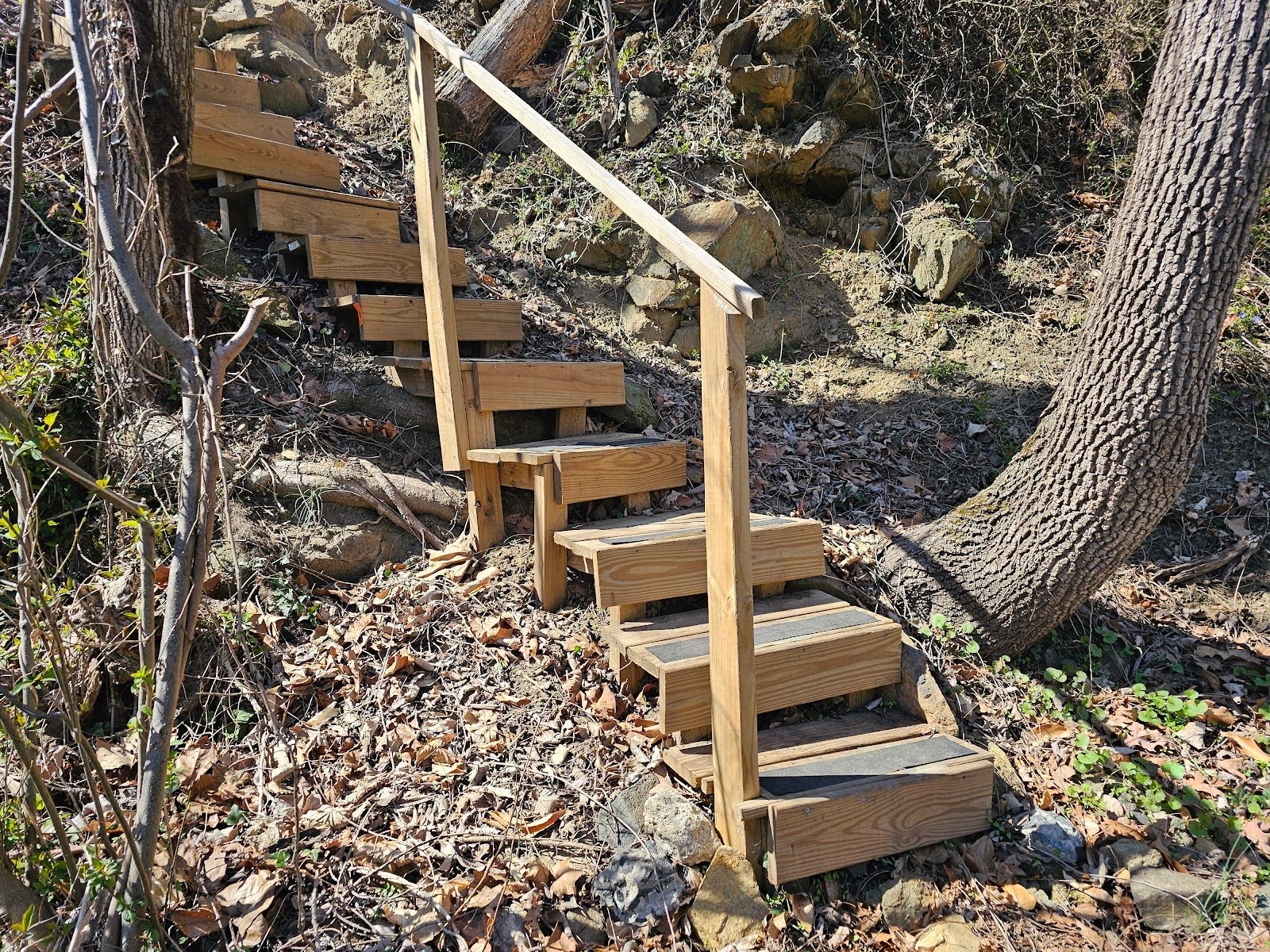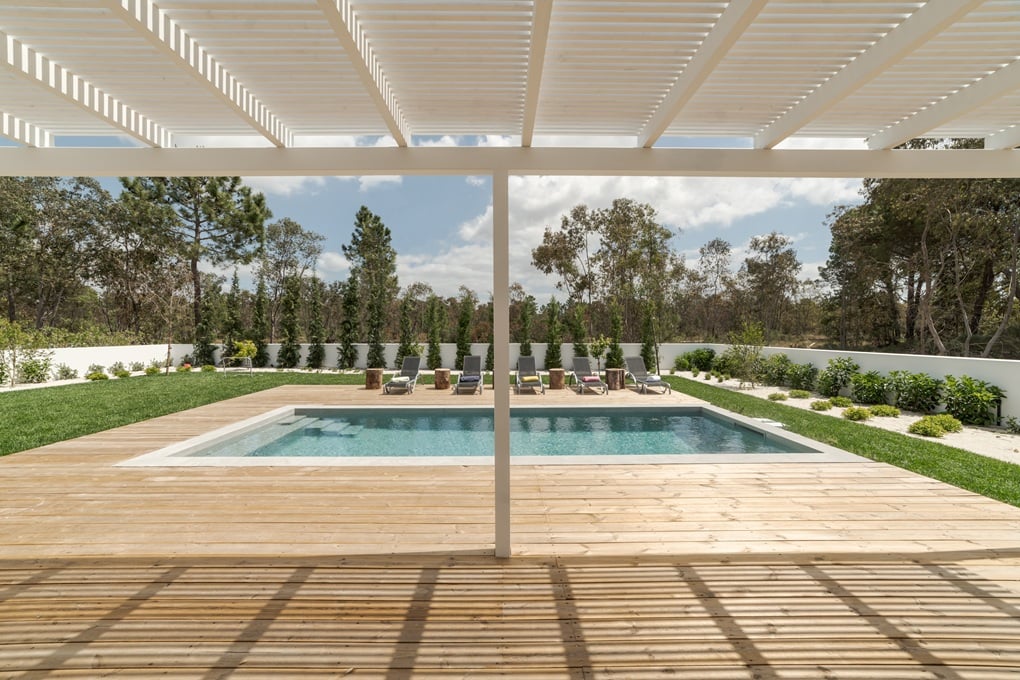Masonry Patio Paving Supported by Strong Foundations
We’ve looked at a bunch of different patterns of brick and or masonry paving and patios. Sometimes the simple patterns look just fine. There are several examples, especially here in DC where running bond brick paving is so common. We see the running bond all the time in some of the historic brick walkways around the city. Especially in the historic neighborhoods. Outside of the historic neighborhoods, concrete sidewalks are unfortunately a bit more common. The brick though has a classic and timeless aesthetic that melds well with the historic row homes and historic parts of our beautiful city.
The picture below shows a slightly elevated patio set in a herringbone pattern with a CMU type paver. CMU pavers are very similar to many types of brickwork type patios, but they’re not actually made with stone or brick. Instead they’re actually made with cementitious materials like a cinder block. They don’t look quite as utility grade or boring as a typical cinder block though. In some cases these CMU pavers can actually come in a variety of different colors.
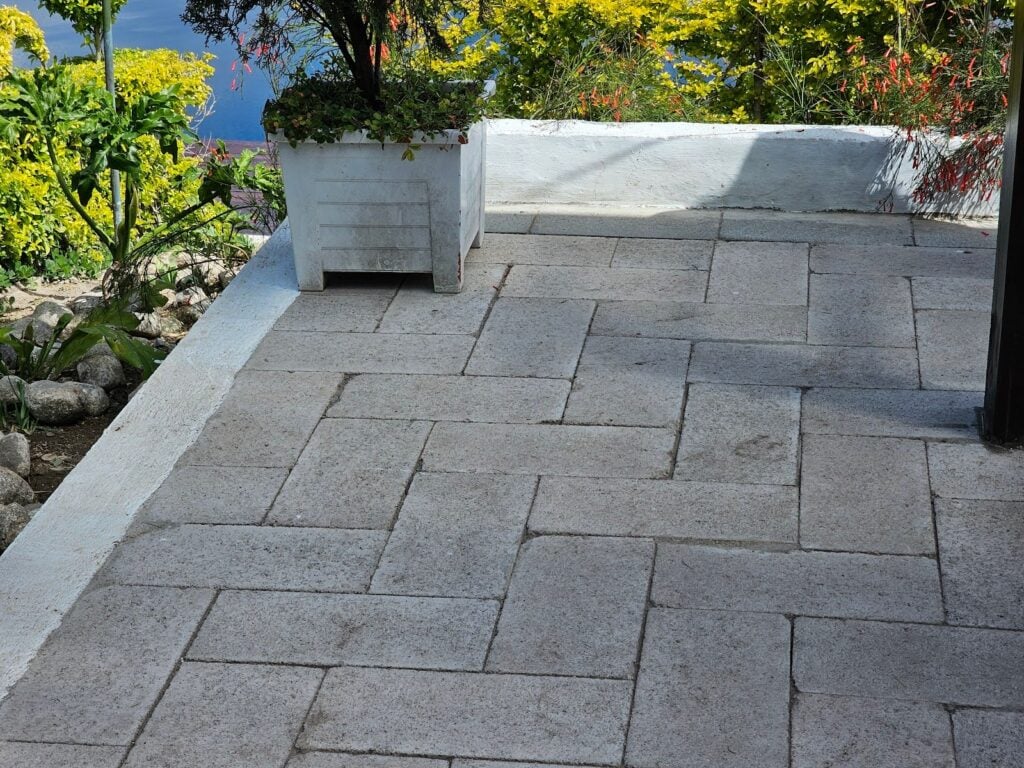
As you can see in the pictures here, these pavers are slightly larger than typical brick paving. Having less units, overall, in a similar area, compared to typical brick paving, means that the CMU might have a slightly lower cost for installation. The labor is simply a bit more efficient or expedited if there are a lesser number of overall units.
This concept or principle applies pretty consistently among different types of masonry paving, but there are exceptions. With borders and edges, for example, where there are many different types of cuts, Labor will be more complicated. The installation simply requires more time and a tedious type of approach because cutting stone or bricks or even CMU type pavers requires time and concentration.
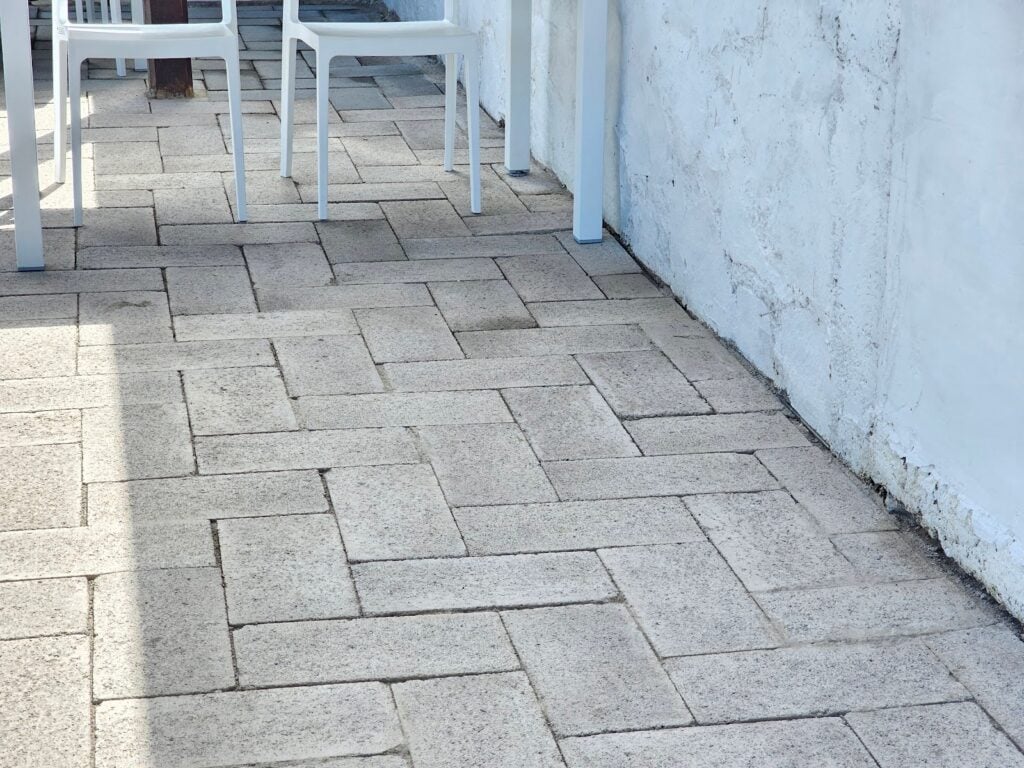
When you look at the paving from a slight angle, as shown in the next picture below, the herringbone pattern seems a bit more prominent. Herringbone is one of the more attractive types of patterns. Typical masonry units, when set in a wall, will generally be set in beds of mortar. Even the vertical edges of the units, generally referred to as perpend joints, will be filled with mortar as well.
The mortar basically allows the individual units to join and bond together and also creates a bed that allows for a buffer between the individual units so the wall can be built straight and true even with a degree of variation differentiation between each of the individual units. Here though, with a CMU installation, there’s slightly less variation between the individual units since they don’t shift in shape even to a slight degree as much as would be found in the typical kiln firing process.
Stone masonry, by comparison, doesn’t go through a firing process in a kiln, yet stone has a high degree of variation between individual units. Here, CMU is a bit of an exception because the elements are generally cast and or created with a higher degree of consistency.

A plan view, looking downward from above at the hearing bone pattern is shown in the picture below. Even though these individual units are not set together in a mortar, typical to brick work, the joints between the individual pieces of paving units will still often be filled with a masonry sand or even a polymer type sand. Polymer sand has more consistency in the size of the individual granules of sand and has a binder type of characteristic which helps lock the individual pieces into place.
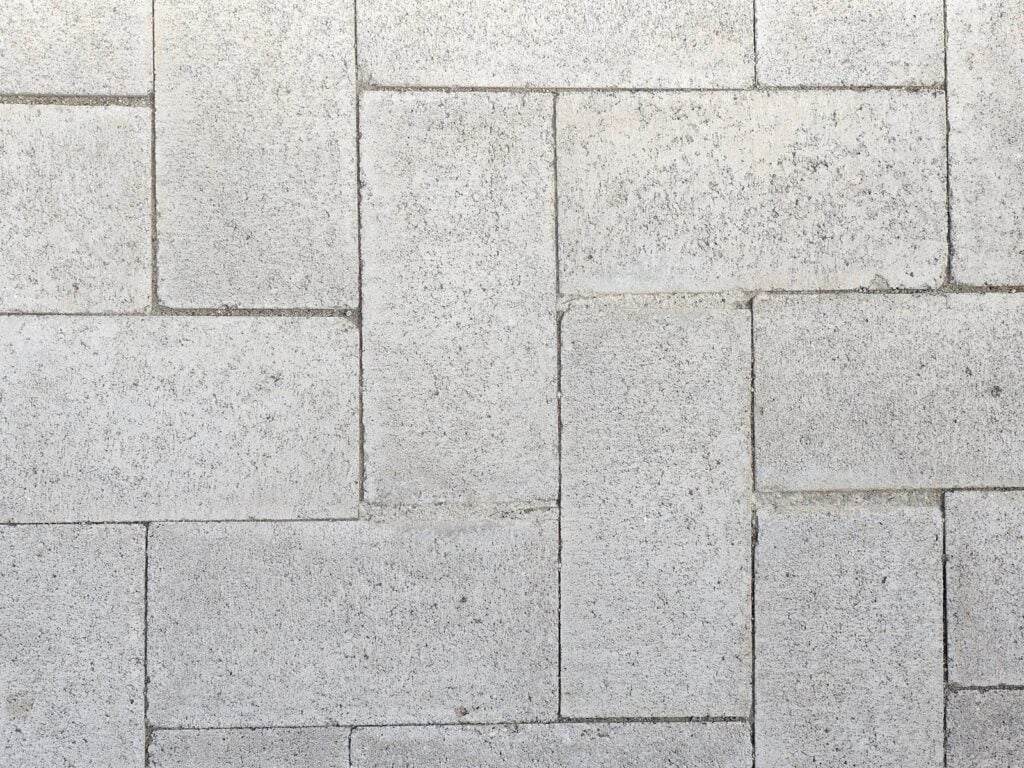
Here, in the next picture below, you can see the herringbone pattern in the same patio but the picture below shows an example of where the stones have been cut to shape to fit around the edge of a garden planter. The particular curb at the edge of the garden planter has a thin LED strip light. This light is very dim, but in the dark hours of the evening and early hours of the morning, the light is a wonderful accent that both illuminates the perimeter of the planting areas and also provides a guide for people to see where they’re walking, even in the dark.
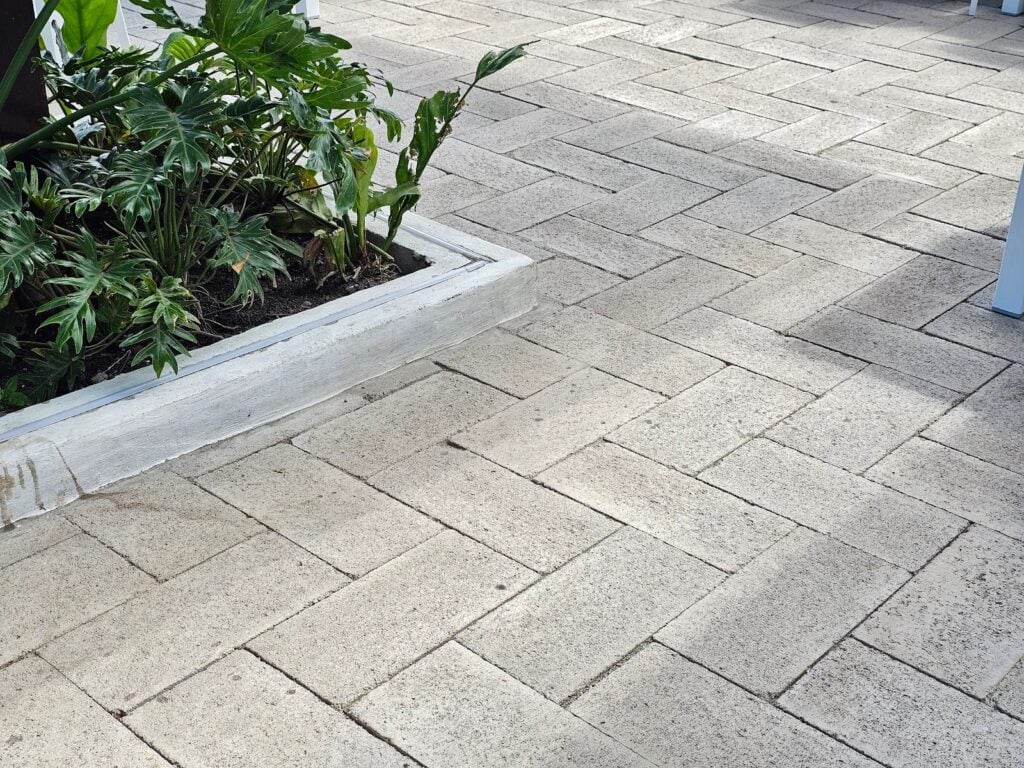
Use a contractor who understands and cares about doing things right. Always, feel free to reach out to us here at Dupont Decks and Patios. We are happy to help with almost all steps of the deck building and design process. A backyard and outdoor space should make a significant, positive impact on both quality of life and home value. We can help with more than just decks, we also build patios, pergolas, ramadas, awnings, gazebos, arbors, and privacy fences.
Let us know about your ideas and talk to us if you have questions about possibilities. We are happy to participate in improving your outdoor space and quality of life! You can call us at (202) 774-9128. You can find us online at https://dupontdeckspatiosdc.com and you can email us there as well at https://dupontdeckspatiosdc.com/contact-us


